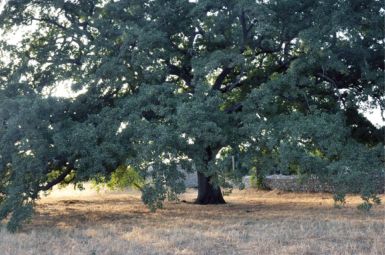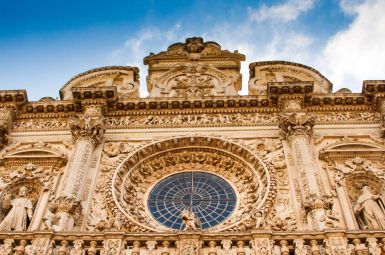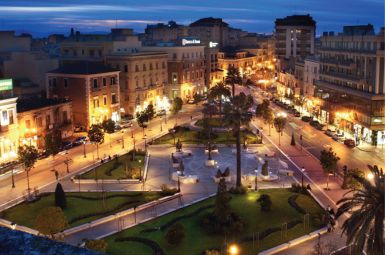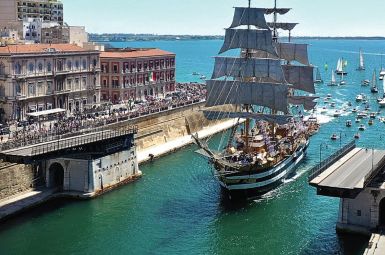
Il Borgo di Venosa
Venosa: Dove la Storia è Eterna e il Vino è Poesia
Venosa (PZ), incastonata nell’area del Vulture-Melfese, è molto più di uno dei “Borghi più belli d’Italia”: è un monumentale viaggio nel tempo, un luogo in cui le vestigia dell’Impero Romano coesistono con l’ombra di un vulcano spento, e dove la cultura affonda le radici nella notte dei tempi. Questa gemma lucana non celebra solo il suo passato millenario, ma è oggi un fulcro di eccellenza enogastronomica, testimoniando una continuità che unisce l’antico Carpe Diem alla moderna arte del buon vivere.La Città di Orazio: L’Eredità Romana
Venosa è universalmente nota per aver dato i natali, nel 65 a.C., a Quinto Orazio Flacco, uno dei massimi poeti della latinità.- Il Brand Globale: Orazio, il cantore del “Carpe Diem”, è il brand immortale della città. Il suo spirito echeggia tra le rovine del Parco Archeologico, un’area vastissima che mostra gli strati di storia: dalla fondazione della colonia romana di Venusia (291 a.C.), importante stazione lungo la Via Appia, fino ai resti di terme, anfiteatri e basiliche.
- Le Catacombe Ebraiche: Venosa vanta una curiosità unica nel Sud Italia: un complesso di Catacombe Ebraiche, testimonianza della presenza di un’importante comunità ebraica tra il IV e il IX secolo d.C. Un patrimonio ipogeo che svela un crocevia di culture e fedi.
L’Incompiuta e il Fascino Medievale
Il panorama monumentale di Venosa è dominato da due strutture che definiscono il suo carattere storico e architettonico:- La Santissima Trinità (L’Incompiuta): Un complesso abbaziale di una bellezza drammatica e suggestiva. La Chiesa Antica e la sua Incompiuta, una maestosa basilica mai completata (XII secolo), colpiscono per la potenza della loro incompiutezza. I resti delle mura non ultimate rivelano materiali di reimpiego provenienti dagli edifici romani circostanti.
- Il Castello Aragonese (Pirro del Balzo): Maestosa fortezza a pianta quadrata con quattro imponenti torri cilindriche, fu costruito nel 1470 dal duca Pirro del Balzo. Un tempo roccaforte, oggi è un elegante palazzo che ospita il Museo Archeologico Nazionale “Mario Torelli”, custode dei reperti che raccontano l’evoluzione del territorio dal Paleolitico al Rinascimento.
Il Vino del Vulcano: Aglianico del Vulture DOCG
Venosa è una delle capitali indiscusse della produzione vinicola lucana, grazie al fertile terreno vulcanico del vicino Monte Vulture.- L’Eccellenza Lucana: Le sue colline producono l’uva Aglianico, base per l’omonimo e rinomato vino Aglianico del Vulture DOCG, uno dei rossi più importanti del Sud Italia, noto per la sua struttura, complessità e longevità. La produzione vinicola qui non è solo economia, ma un’arte secolare che si sposa perfettamente con la tradizione classica del Carpe Diem.
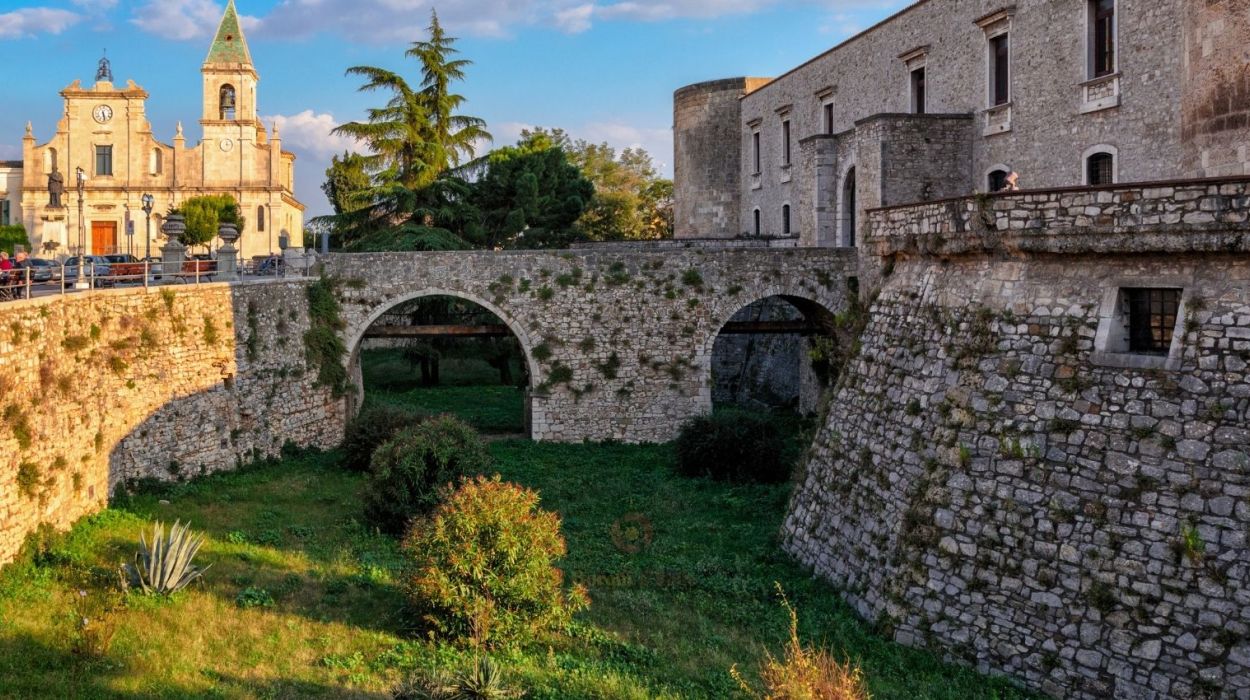
Il Borgo d’Italia
tutto da scoprire ed esplorare
Monumenti
Venosa Monumentale: L’Eredità Immortale del Tempo
Venosa (PZ) non è un semplice borgo, è una lezione di storia a cielo aperto. Ogni pietra, ogni arco, ogni colonna racconta il passaggio di civiltà, da Roma ai Normanni, dal genio del poeta Orazio all’oscura bellezza dell’incompiuto.
Sei pronto a scoprire i monumenti iconici che hanno reso Venosa una tappa imprescindibile nel cuore della Basilicata?
1. L’Abbazia della Santissima Trinità: Il Sogno Interrotto
Questo è il complesso monumentale più affascinante di Venosa e un unicum nel panorama italiano. L’Abbazia si compone di due corpi che raccontano l’ambizione e il destino:
- La Chiesa Antica: Un gioiello paleocristiano e medievale, luogo sacro e pantheon normanno. Qui riposano figure chiave come Aberada, la prima moglie del celebre Roberto il Guiscardo d’Altavilla, e diversi membri della dinastia che plasmò il Sud Italia.
- L’Incompiuta: Imponente e drammatica, questa struttura fu iniziata per essere una cattedrale mastodontica, ma i lavori si interruppero. La sua facciata senza tetto, eretta con conci di pietra recuperati dai monumenti romani (un esempio di riuso storico), crea una scenografia mozzafiato. Non una rovina, ma un gigante di pietra che celebra l’ambizione umana e la potenza del tempo.
2. Il Parco Archeologico e la Memoria di Orazio
Venosa è l’antica Venusia, e il suo legame con l’Impero Romano è palpabile. Il vasto Parco Archeologico permette di passeggiare tra i resti dell’antica città:
- Terme Romane e Domus: Ammira i pavimenti musivi, i resti delle piscine e i muri che un tempo definivano la vita quotidiana dei cittadini romani.
- Anfiteatro e Strade: Cammina lungo le antiche strade basolate e ammira l’ellisse parziale dell’anfiteatro, testimonianza della grandezza e del divertimento dell’epoca imperiale.
- La Casa di Orazio: Sebbene l’attribuzione non sia certa, i resti di una grande domus (forse termale) vengono tradizionalmente indicati come la casa natale del poeta Quinto Orazio Flacco. Un luogo simbolo per omaggiare il padre del motto Carpe Diem.
3. Il Castello Aragonese del Balzo: Fortezza e Cultura
Maestoso e dominante, il Castello Aragonese si erge all’ingresso del borgo. Costruito nel 1470 da Pirro del Balzo, questo maniero quadrangolare con imponenti torri cilindriche fu concepito come fortezza difensiva e successivamente trasformato in elegante dimora.
Oggi, il Castello è il cuore della cultura moderna, ospitando il Museo Archeologico Nazionale che espone i reperti più preziosi (dalla Preistoria all’epoca romana) scoperti nel territorio di Venosa. È il punto di unione tra passato e presente.
4. Le Catacombe Ebraiche: La Storia Nascosta
Venosa sorprende con le sue Catacombe Ebraiche, una delle testimonianze più significative e rare della presenza di una fiorente comunità ebraica nel Sud Italia tra il IV e il VI secolo d.C.
Questi labirinti sotterranei, ricchi di tombe e iscrizioni in ebraico, greco e latino, raccontano una storia di convivenza multiculturale e tolleranza religiosa unica, offrendo uno sguardo profondo sulla vita sociale della Venosa tardoantica.
Dalla pietra preistorica ai versi di Orazio, Venosa è una città che non smette mai di stupire. Hai mai pensato che così tanta storia potesse essere racchiusa in un solo borgo?
Curiosità
Venosa Sconosciuta: Le Curiosità Che Rendono il Borgo Leggendario
Oltre Orazio, oltre il Castello. Venosa (PZ) è un tesoro di storie segrete e sorprendenti verità che sfidano la tua immaginazione. Pensavi di conoscerla? Preparati a scoprire i dettagli che la rendono un unicum nel cuore della Basilicata.
Ecco le curiosità che trasformano una visita in una vera e propria avventura archeologica e culturale:
1. La Capitale del “Non Finito” più suggestivo d’Italia
Il monumento più celebre di Venosa è un’opera che non è mai stata completata: l’Abbazia Incompiuta. Non è una rovina causata da un terremoto o da un incendio, ma il simbolo di un’ambizione grandiosa, quella dei Normanni, che si interruppe.
- Il genio del riuso: Osservando i suoi muri, noterai che la Chiesa Nuova fu costruita usando blocchi di pietra sottratti all’Anfiteatro Romano. I conci di pietra portano ancora incise iscrizioni latine e decorazioni antiche. Stai ammirando, letteralmente, due monumenti in uno.
2. Le Catacombe Svelano una Trama Giudeo-Cristiana
Venosa non è solo romana o medievale; è sorprendentemente multiculturale. Ospita le Catacombe Ebraiche, una delle testimonianze più importanti e meglio conservate della presenza ebraica nell’Italia meridionale.
- Il mistero delle lingue: Nelle Catacombe si trovano iscrizioni in latino, greco ed ebraico, a testimonianza di una comunità mercantile e colta che conviveva pacificamente. Questo luogo sotterraneo è la prova che Venosa fu un cruciale crocevia di fedi e lingue in piena epoca tardoantica.
3. Qui è Nata l’Eredità della Massima “Carpe Diem”
Venosa è la patria di Quinto Orazio Flacco (65 a.C.), forse il poeta latino più citato al mondo.
- Non solo Carpe Diem: È qui che Orazio trascorse l’infanzia, ricevendo un’educazione che plasmò il suo pensiero. La sua figura è talmente centrale che la piazza principale del borgo (Piazza Orazio) ospita la sua statua. Venosa ti invita a vivere il presente, proprio come insegna il suo figlio più illustre.
4. Il Castello Nasconde un Tradimento Architettonico
Il maestoso Castello Aragonese domina la scena. Ma la sua costruzione nasconde una storia di “sacrificio” edilizio.
- Costruito sopra la Cattedrale: Il maniero fu eretto nel 1470 da Pirro del Balzo. Per fare spazio alla fortezza, fu abbattuta l’antica Cattedrale di San Felice, i cui resti sono inglobati nelle fondamenta. Un esempio di come il potere medievale abbia ridefinito lo spazio urbano a discapito della storia precedente.
5. Il Vino come Patrimonio Archeologico
La zona di Venosa non è solo famosa per i monumenti, ma per l’eccellenza enologica: l’Aglianico del Vulture DOCG.
- Il vino del vulcano: Questo vino rosso robusto affonda le sue radici nei terreni vulcanici del Monte Vulture (un vulcano ormai spento), che conferiscono al prodotto finale una mineralità e una struttura inimitabili. Bere Aglianico a Venosa significa assaporare la geologia e la storia millenaria della terra lucana.
Venosa è un’esplosione di contrasti: dal Paleolitico ai Normanni, dal sacro al profano. Quale di questi segreti vorrai svelare per primo?
Personaggi
Certamente! Venosa, la città che ha resistito per millenni, ha forgiato personalità eccezionali che ne hanno portato il nome in tutto il mondo.
Ecco i personaggi illustri nativi di Venosa, presentati con un tono che ne esalta la statura storica e culturale.
Venosa, Fucina di Geni: Gli Eredi Immortali della Lucania
Venosa (PZ) non è semplicemente un borgo medievale; è la patria di figure che hanno ridefinito la letteratura, l’arte e la politica del loro tempo. Dal genio dell’antichità all’impegno per il Mezzogiorno, ecco chi ha dato lustro eterno alla Città di Orazio.
📜 Quinto Orazio Flacco: Il Poeta Immortale (65 a.C. – 8 a.C.) ✍️
È la figura più importante, il vero simbolo di Venosa. Quinto Orazio Flacco è universalmente riconosciuto come uno dei massimi poeti lirici dell’età augustea e dell’intera storia romana.
- Il Genio Letterario: Nato a Venusia (l’antica Venosa) da un liberto, Orazio seppe elevarsi grazie alla sua intelligenza e all’istruzione. Divenne protetto di Mecenate e amico di Augusto.
- L’Eredità: Le sue opere—le Odi, gli Epodi, le Satire e le Epistole—sono studiate in tutto il mondo. A lui si deve l’invenzione di massime entrate nel linguaggio comune, tra cui il celeberrimo “Carpe Diem” (Cogli l’attimo).
Orazio non ha solo scritto poesia, ha definito l’arte di vivere.
🎨 Carlo Venosino: Il Maestro del Rinascimento (c. 1555 – 1635) 🖌️
In pieno periodo tardo-rinascimentale, Venosa ha dato i natali a un pittore di notevole talento: Carlo Venosino (nome d’arte di Carlo da Venosa).
- L’Artista di Corte: La sua fama superò i confini della Basilicata, portandolo a Roma, dove lavorò per importanti committenti.
- Lo Stile: Sebbene meno noto dei giganti del suo tempo, la sua opera si distingue per l’eleganza compositiva, incarnando lo spirito colto e raffinato dell’arte del Cinquecento meridionale.
🏛️ Manfredi di Sicilia: Il Figlio dell’Imperatore (1232 – 1266) 👑
Sebbene legato a una dinastia che regnò sul Sud Italia, Venosa è orgogliosa di aver dato i natali a Manfredi di Svevia, figlio illegittimo dell’imperatore Federico II e Bianca Lancia.
- Il Principe e Re: Nato nel Castello di Venosa o nelle sue immediate vicinanze, Manfredi fu una delle figure più affascinanti e tragiche del Medioevo, diventando prima principe di Taranto e poi Re di Sicilia. La sua figura è immortalata anche da Dante Alighieri nella Divina Commedia.
🇮🇹 Quinto Orazio Flacco (Giurista): Un Eroe dell’Unità (1821 – 1888) ⚖️
Omaggio al celebre poeta, Quinto Orazio Flacco fu un eminente giurista e politico venosino che partecipò attivamente ai moti risorgimentali in Basilicata.
- L’Impegno Civile: La sua figura è emblematica dell’impegno politico e civile della Lucania post-unitaria. Contribuì alla diffusione degli ideali liberali e all’organizzazione delle prime strutture dello Stato italiano sul territorio, rappresentando la città anche come sindaco.
Venosa è un luogo dove il passato non si limita a esistere, ma ispira. Vivi la storia di questi grandi uomini, dalle satire di Orazio al Castello degli Svevi.
Ricette Tipiche
Venosa in Tavola: Il Gusto Nobile e Rurale della Basilicata
A Venosa (PZ), la storia si assapora. La cucina è un ponte diretto con la tradizione contadina e il fasto del passato romano, un equilibrio perfetto tra semplicità rustica e materie prime d’eccellenza, esaltate dal re indiscusso del territorio: l’Aglianico del Vulture.
Sei pronto a scoprire i piatti che hanno nutrito poeti e re, trasformando ingredienti poveri in vere esperienze di gusto?
1. I Primi Piatti: L’Essenza della Tradizione Lucana
Lagane e Fagioli (o Ceci): Pasta “Povera,” Sapore Ricco
È il simbolo della gastronomia venosina. Le Lagane sono una pasta di semola e acqua (senza uova), caratterizzata da una forma spessa e “strapazzata” (simili a larghe tagliatelle), pensate per esaltare il legame con la terra.
- Il Segreto: Vengono tradizionalmente condite con fagioli (spesso borlotti o cannellini) o ceci, aglio, e un generoso filo d’olio extra vergine d’oliva locale, a volte arricchite da un pizzico di peperoncino crusco (il peperone essiccato e fritto, croccante e iconico della Basilicata). Un piatto rustico e confortante, carico di energia.
Orecchiette con Ragù d’Agnello o Salsiccia Lucana
Sebbene le orecchiette siano associate alla Puglia, qui la Basilicata ne rivendica una versione unica, sposata con i sapori intensi del Vulture.
- Il Condimento Nobile: Le orecchiette (spesso preparate in casa) vengono affogate in un ricco ragù a lunga cottura, preparato con carne d’agnello o la celebre salsiccia lucana (talvolta la “salsiccia a punta di coltello”). Questo sugo denso e avvolgente riflette la tradizione pastorale della zona.
2. I Secondi: Sapori Forti e Territoriali
La Cutturidd (Agnello in Pignata): L’Arte della Lenta Cottura
Questo è il piatto della domenica e delle feste. La cutturidd (o agnello in pignata) è un inno alla cucina lenta e paziente.
- La Preparazione: L’agnello, tagliato a pezzi, viene cotto in una pignata (pentola di terracotta) sul fuoco vivo o in forno a legna, insieme a patate, cipolle, pomodorini, sedano e aromi selvatici del Vulture. La cottura lentissima rende la carne incredibilmente tenera e il sugo denso e aromatico.
Baccalà al Forno con Peperoni Cruschi
Un’alternativa al sapore di carne, che testimonia gli antichi scambi commerciali tra la Lucania e le regioni costiere. Il baccalà qui viene preparato in modo trionfale.
- L’Oro Rosso: Il pesce viene cotto al forno, ma la vera magia arriva con il condimento: una pioggia di Peperoni Cruschi, che con la loro croccantezza e il sapore agrodolce donano al piatto un contrasto memorabile.
3. L’Essenza Dolce e Salata
Il Pane di Venosa: Il Carattere del Grano Duro
Venosa, situata in una zona cerealicola, è famosa per la qualità delle sue farine. Il pane locale (simile al Pane di Matera, ma con sue specificità) è preparato con semola di grano duro locale, riconoscibile per la crosta croccante e la mollica soffice e gialla. È il vero pilastro della tavola, ideale per la scarpetta.
Il Dolce del Vulture: La Scauratiello (o Zeppola)
Tra i dolci, spiccano le zeppole lucane (scauratielli), che vengono fritte e passate nel miele o cosparse di zucchero a velo. Un dolce semplice, ma energico, tipico delle festività invernali.
La cucina venosina è un racconto di genuinità e storia. Ogni ingrediente è un omaggio alla terra di Orazio e il compagno ideale di questi sapori è, ovviamente, un calice di Aglianico del Vulture.
Sei pronto a brindare alla storia di Venosa?
